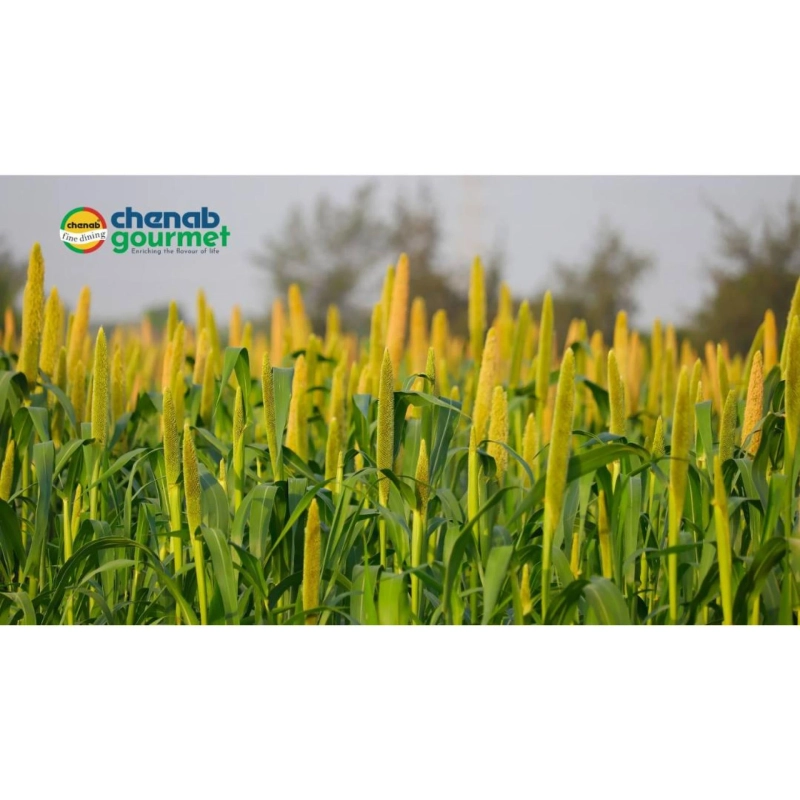In recent years, global attention has shifted towards sustainable agriculture and food security, driven by concerns over climate change, population growth, and the need for dietary diversification. One of the champions emerging in this field is millets, a group of highly versatile grains known for their resilience and nutritional value. This blog explores the critical role millets play in enhancing food security and combating hunger.
Millets, often referred to by various names such as "Mota Annaj," "Nutri-cereals," "coarse cereals," and historically known as "cereals of the poor," have recently been celebrated as "Shree Ann—the mother of all grains." This new title was introduced by India's Finance Minister, Mrs. Nirmala Sitharaman, during her budget speech on February 1, 2023. During the same speech, it was announced that the Indian Institute of Millets Research (IIMR) in Hyderabad would be elevated to a Centre of Excellence.
Renowned for their nut Indian millets ritional richness and drought tolerance, Indian millets thrive predominantly in the arid and semi-arid regions of India. These small-seeded grasses, belonging to the botanical family "Poaceae," serve as a crucial source of sustenance and forage for millions of resource-poor farmers, contributing significantly to India's economic security. In 2018, millets were officially designated as "Nutri-cereals" and were incorporated into the "Poshan Abhiyaan" initiative aimed at reducing malnutrition and micronutrient deficiencies among impoverished populations. This focus on millets spurred a remarkable increase in their production, which saw a 27% growth in the 2021-2022 period.
Understanding Millets and Their Importance
Millets are small-seeded grasses widely cultivated in semi-arid tropics of Asia and Africa, particularly in India, Mali, Nigeria, and Niger. These grains are not only adaptable to poor, drought-prone environments but also require little to no synthetic fertilizers, making them an eco-friendly crop choice.
Nutritional Powerhouse
Millets are rich in proteins, dietary fiber, and essential minerals such as magnesium, phosphorus, and iron. They are also gluten-free, making them an excellent dietary option for those with gluten intolerance or celiac disease. The inclusion of millets in daily diets can help address nutritional deficiencies and promote a balanced diet, crucial components in fighting hunger and malnutrition.
Millets as a Solution to Food Security Challenges
High Yield and Resilience
One of the most significant advantages of millets is their hardiness and ability to thrive in harsh environmental conditions. They can grow in poor soils where other crops would fail, and their short growing season allows farmers to harvest quickly, reducing the risk of crop failure due to weather extremes.
Sustainability and Environmental Impact
Millets contribute to sustainable agriculture by improving soil fertility and reducing the need for chemical fertilizers. Their deep root systems help in combating soil erosion and increasing the organic content in the soil, promoting biodiversity and healthy ecosystems.
How Millets Can Combat Hunger
Accessibility and Affordability
Being easy to grow and requiring minimal inputs, millets are an affordable food option for rural populations. This accessibility makes millets a viable solution for food-insecure regions, where they can significantly contribute to alleviating hunger.
Versatility in Use
Millets can be used to make a variety of foods, from bread and cereals to beverages and snacks, which means they can be easily incorporated into the local diets, enhancing the diversity of food available to impoverished communities.
Integrating Millets into Modern Diets
While millets form a staple diet in many developing countries, there is a growing trend to include these grains in the diets of developed nations as well. This integration not only helps in diversifying the global food basket but also stabilizes the demand and supply chain of millets, supporting sustainable agricultural practices worldwide.
The Role of Chenab Gourmet
Chenab Gourmet has recognized the potential of millets in ensuring food security and is committed to promoting these grains through various initiatives. By sourcing millets from smallholder farmers, Chenab Gourmet helps in creating stable markets for these crops, thus encouraging the farming of millets. Additionally, they offer a range of millet-based products that cater to health-conscious consumers, making it easier for people to incorporate these nutritious grains into their diets.
Supporting Local Farmers
Chenab Gourmet collaborates with local farmers to improve millet yield and quality through training and sustainable farming practices. This support not only boosts local agriculture but also ensures that farmers can make a viable living from millet cultivation.
Educating Consumers
Through workshops, cooking classes, and online resources, Chenab Gourmet educates consumers on the benefits of millets and how to cook them. This education helps in breaking myths and misconceptions about millets, promoting them as a modern superfood.
FAQ About Millets
Q: What are the different types of millets?
A: There are several types of millets, including pearl, foxtail, finger, proso, and sorghum, each with unique qualities and uses in cooking.
Q: Are millets gluten-free?
A: Yes, all millets are naturally gluten-free, making them a great alternative for those on a gluten-free diet.
Q: How do millets help in fighting diabetes?
A: Millets have a low glycemic index, which helps in controlling blood sugar levels, making them beneficial for people with diabetes.
Q: Can millets be used in baking?
A: Yes, millet flour can be used for baking breads, cakes, and cookies. It imparts a mild, sweet flavor to the baked goods.
As the world moves towards a more sustainable future, millets offer a promising solution to many of our modern challenges, including food security, dietary health, and environmental sustainability. Chenab Gourmet is at the forefront of this movement, demonstrating how businesses can play an active role in promoting sustainable food sources. By supporting millet cultivation and integrating these grains into our diets, we can take significant strides towards a hunger-free world.


